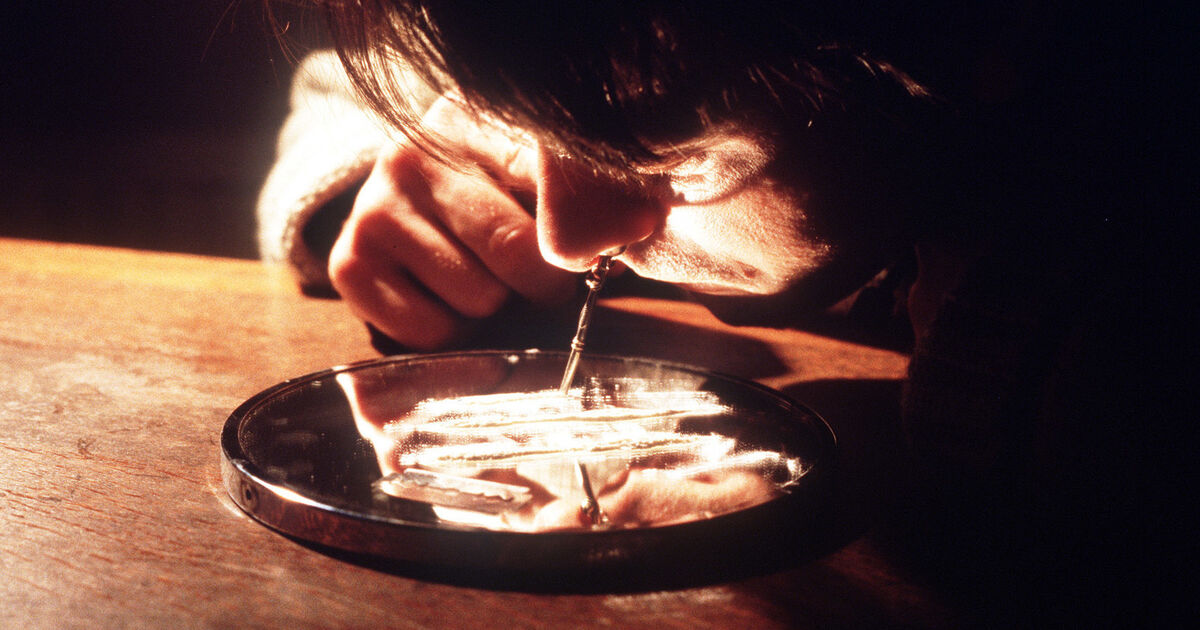Ireland is in the midst of a “perfect storm” of cocaine, with increased availability, higher purity, and greater affordability, according to new research.
The country’s leading drug experts said a range of indicators consistently point to a worsening problem and warn that there is potential for even “further increases” in cocaine use and harms.
They said their research findings showing a massive rise in cocaine admissions to hospitals “likely represent the tip of the iceberg” for attendances at A&Es — given that research indicated that only a fifth of attendances end in admission.
The authors said significant levels of funding “will be essential” to deal with the problem and highlighted the need for harm-reduction messages to limit overdoses and deaths.
 One of the startling statistics in the HRB report is that cocaine-related discharges from acute hospitals rose from 1.4 per 100,000 patients in 2000 to 24.3 per 100,000 in 2023. Stock picture
One of the startling statistics in the HRB report is that cocaine-related discharges from acute hospitals rose from 1.4 per 100,000 patients in 2000 to 24.3 per 100,000 in 2023. Stock picture
The study was led by a team from the Health Research Board, the country’s leading research agency on drugs, assisted by academics and clinicians from UCC, TCD, and the HSE.
“Given the perfect storm of increased availability, increased price purity, and greater affordability, there is potential for further increases in rates of use and harms,” the study said.
The authors said it was, to their knowledge, the first study in Europe of cocaine-related harms using a range of indicators over a prolonged period of time.
Based on data from five sources, the research found:
Cocaine-related discharges from acute hospitals have soared from 1.4 per 100,000 people in 2000 to 24.3 per 100,000 in 2023;
Cocaine-related psychiatric admissions have increased from 0.24 to 2.4 per 100,000 population between 2000 and 2022;
Cocaine treatment (as the main problem drug) has jumped from 1.5 to 93.2 per 100,000 people between 2020 and 2023;
Last year, cocaine use among 15-64-year-olds increased from 1.1% in 2002/03 to 2.4% in 2022/23;
Cocaine-related fatal overdoses have increased from 0.13 to 2.6 per 100,000 between 2000 and 2020.
The research, published in ‘BMC Public Health’, said a “major strength” of the study was the use of a range of national databases covering the entire population of Ireland and the fact that “all data sources provided consistently similar trends”.
The analysis showed not only a similar overall trend between 2000 and 2023 but similar fluctuations in between, with increases between 2000 and 2007, followed by reductions until around 2011-2013.
It said that since then, there has been “a consistent and significant increase” across all the cocaine harm indicators.
The research said it “should be noted” that the data on cocaine hospital discharges “likely represent the tip of the iceberg of acute cocaine-related health problems”.
It said research indicates that only 22% of cocaine-related attendances at emergency departments are admitted to hospital.
The report said covid did not appear to have had any impact on cocaine-related harm trends in Ireland “suggesting that restrictions associated with the pandemic did not have a major influence on cocaine supply”.
It also said that, “to some extent”, the fluctuations on cocaine usage mirror those observed in the economy since 2000, with the sharp increase to 2007 coinciding with the Celtic Tiger and the drop in cocaine use coming during the deep recession between 2008 and 2012.
The study said the rise in cocaine use since 2000 has occurred despite a ‘substantial increase’ in the number of cocaine seizures — from 566 in 2003 to 4,020 in 2022.
The research said “cocaine use has become a significant public health issue”, which reinforces the need for harm reduction strategies “targeted at reducing overdoses, injuries, and other health harms”.
The ‘Irish Examiner’ reported last week that around a tonne of cocaine has been seized so far this year and a record 3.45 tonnes in 2023. This compared to a yearly low of 52kg and a high of 138kg between 2016 and 2021.
